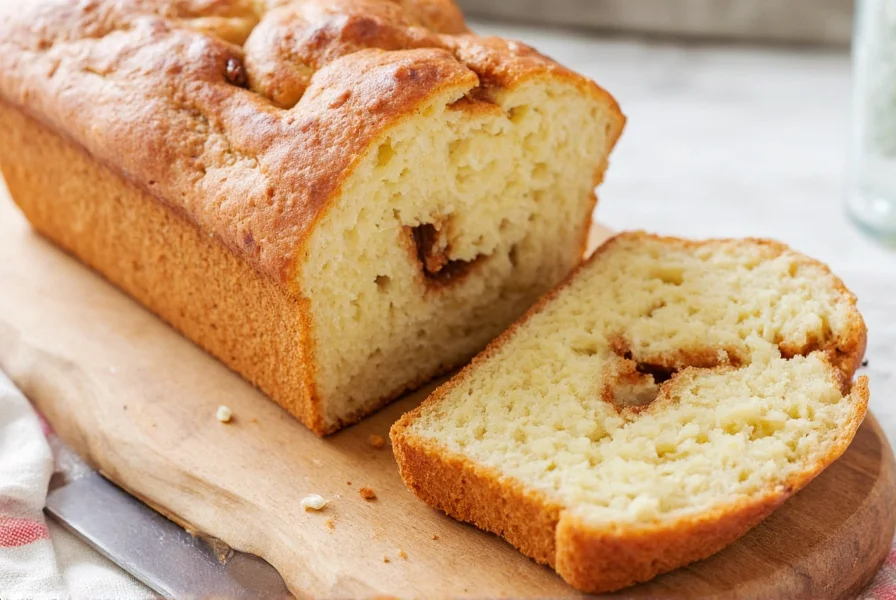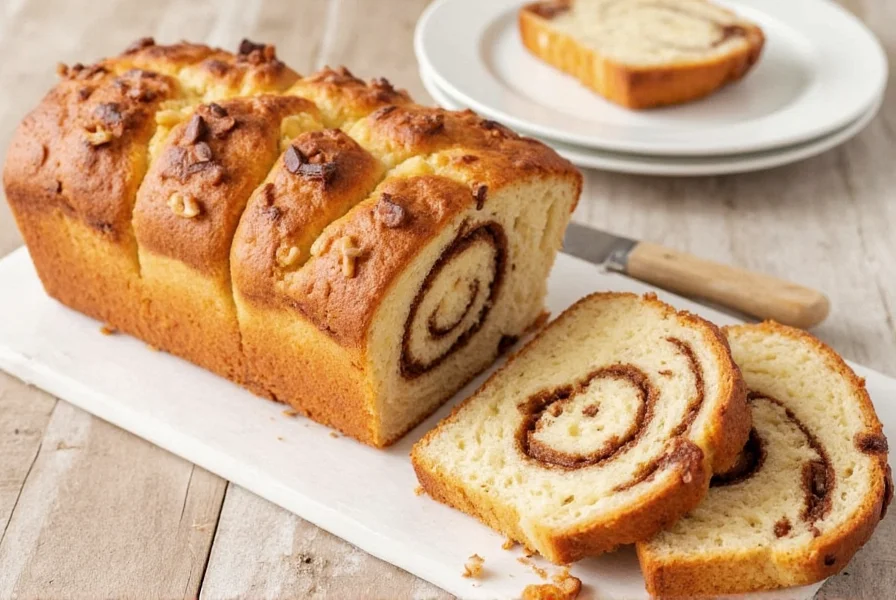For those seeking a more nutritious alternative to traditional cinnamon roll bread without sacrificing flavor, cottage cheese cinnamon roll bread delivers an impressive solution. By strategically incorporating cottage cheese—a high-protein, low-fat dairy product—into the dough or filling, home bakers can transform this indulgent treat into a balanced meal that supports muscle maintenance and provides sustained energy.
The Nutritional Advantage of Cottage Cheese in Baking
Cottage cheese isn't just for salads anymore. When blended until smooth, it becomes an ideal ingredient for baking, offering several advantages over conventional ingredients:
- Protein boost—adds approximately 14g of protein per cup compared to traditional recipes
- Moisture retention—creates exceptionally tender crumb without excess fat
- Lower sugar content—allows for reduced added sugars while maintaining sweetness perception
- Calcium enrichment—provides essential bone-supporting nutrients
This high protein cinnamon roll bread recipe works particularly well for active individuals, children needing sustained morning energy, or anyone looking to improve the nutritional profile of their favorite baked goods without compromising on taste.
| Nutritional Component | Traditional Cinnamon Roll Bread | Cottage Cheese Cinnamon Roll Bread |
|---|---|---|
| Protein (per serving) | 3g | 7g |
| Total Fat | 8g | 6g |
| Calcium | 2% DV | 10% DV |
| Sugar | 18g | 14g |
Perfecting Your Cottage Cheese Cinnamon Roll Bread Recipe
The key to successful cottage cheese cinnamon roll bread lies in proper preparation of the cottage cheese itself. For optimal texture, blend full-fat cottage cheese until completely smooth before incorporating it into your dough. This healthy cinnamon roll bread alternative works best when you replace approximately one-third of the butter or oil in traditional recipes with an equal amount of blended cottage cheese.
When developing your how to make cottage cheese cinnamon roll bread technique, consider these professional tips:
- Temperature matters—use room-temperature cottage cheese for seamless incorporation
- Drain excess liquid—pat cottage cheese dry with paper towels before blending
- Flavor enhancement—add a touch of vanilla or lemon zest to complement the cottage cheese
- Dough consistency—adjust flour gradually as cottage cheese affects hydration

Step-by-Step Baking Instructions
Creating the perfect protein-packed breakfast bread requires attention to detail. Begin by blending 1 cup of full-fat cottage cheese until completely smooth. In a separate bowl, combine 3 cups of all-purpose flour, 2¼ teaspoons of active dry yeast, ¼ cup of sugar, and 1 teaspoon of salt. In another container, mix the blended cottage cheese with ½ cup of warm milk, ¼ cup of melted butter, and 1 large egg.
Gradually incorporate the wet ingredients into the dry mixture, kneading until you achieve a soft, slightly tacky dough. Allow the dough to rise in a greased bowl until doubled in size (approximately 1-1.5 hours). Roll out the dough into a rectangle, then spread with a mixture of ⅓ cup softened butter, ½ cup brown sugar, and 2 tablespoons of cinnamon. Roll tightly, slice, and place in a greased baking dish. Allow to rise again for 30 minutes before baking at 350°F (175°C) for 25-30 minutes.
Avoiding Common Preparation Mistakes
Many home bakers encounter issues when first attempting this cottage cheese代替butter in cinnamon rolls technique. The most frequent problems include:
- Dense texture—caused by insufficient rising time or over-flouring
- Separation—results from improperly blended cottage cheese
- Dryness—occurs when cottage cheese replaces too much fat content
- Flavor imbalance—happens when using low-fat cottage cheese varieties
For best results with your high protein cinnamon roll bread recipe, maintain the proper balance between cottage cheese and traditional ingredients. Start with replacing just 30-40% of the fat content with cottage cheese, then adjust in subsequent batches based on your texture preferences.

Variations for Special Dietary Needs
This versatile recipe adapts well to various dietary requirements. For a gluten-free version, substitute with a quality gluten-free flour blend and add 1 teaspoon of xanthan gum. Those following a lower-sugar regimen can reduce the sugar content by 25% and add 1-2 tablespoons of pure maple syrup for natural sweetness without compromising the dough's structure.
Vegans can create a plant-based alternative using blended tofu instead of cottage cheese, though the protein profile will differ. For those seeking an even higher protein boost, consider adding one scoop of unflavored protein powder to the dry ingredients—a modification that works particularly well with this protein-packed breakfast bread recipe.
Serving and Storage Recommendations
Cottage cheese cinnamon roll bread tastes best when served slightly warm with a light cream cheese glaze made from 4 ounces of reduced-fat cream cheese, 1 cup of powdered sugar, 2 tablespoons of milk, and ½ teaspoon of vanilla extract. Store leftovers in an airtight container at room temperature for up to 2 days or refrigerate for up to 5 days. For longer storage, freeze individual portions and thaw at room temperature for 30 minutes before reheating.
Frequently Asked Questions
Can I taste the cottage cheese in cinnamon roll bread?
When properly blended and incorporated, cottage cheese becomes virtually undetectable in the finished product. The mild flavor blends seamlessly with cinnamon and sweeteners, contributing moisture and protein without altering the classic cinnamon roll taste profile.
What's the best type of cottage cheese to use for baking?
Full-fat cottage cheese provides the best texture and moisture balance for baking. Low-fat varieties contain more liquid, which can throw off your recipe's hydration. Always drain excess liquid and blend until completely smooth before incorporating into your dough for optimal results in your cottage cheese cinnamon roll bread recipe.
How does cottage cheese affect the rising process?
Cottage cheese doesn't significantly impact yeast activity when used in appropriate proportions (replacing 30-40% of fat content). However, the additional protein may slightly extend rising time by 15-20 minutes. Monitor dough volume rather than strict timing for best results with your high protein cinnamon roll bread recipe.
Can I make this recipe ahead of time?
Yes, cottage cheese cinnamon roll bread dough can be prepared through the first rise, then refrigerated overnight. Shape and complete the second rise in the morning for fresh-baked results. The cottage cheese content actually helps maintain moisture during refrigeration, making this healthy cinnamon roll bread alternative particularly well-suited for make-ahead preparation.
Does cottage cheese cinnamon roll bread freeze well?
Absolutely. This protein-packed breakfast bread recipe freezes exceptionally well due to the cottage cheese's moisture-retaining properties. Wrap individual portions tightly in plastic wrap, then place in freezer bags. Freeze for up to 3 months. Thaw at room temperature for 30 minutes, then warm in a 300°F oven for 5-7 minutes for freshly baked quality.










 浙公网安备
33010002000092号
浙公网安备
33010002000092号 浙B2-20120091-4
浙B2-20120091-4